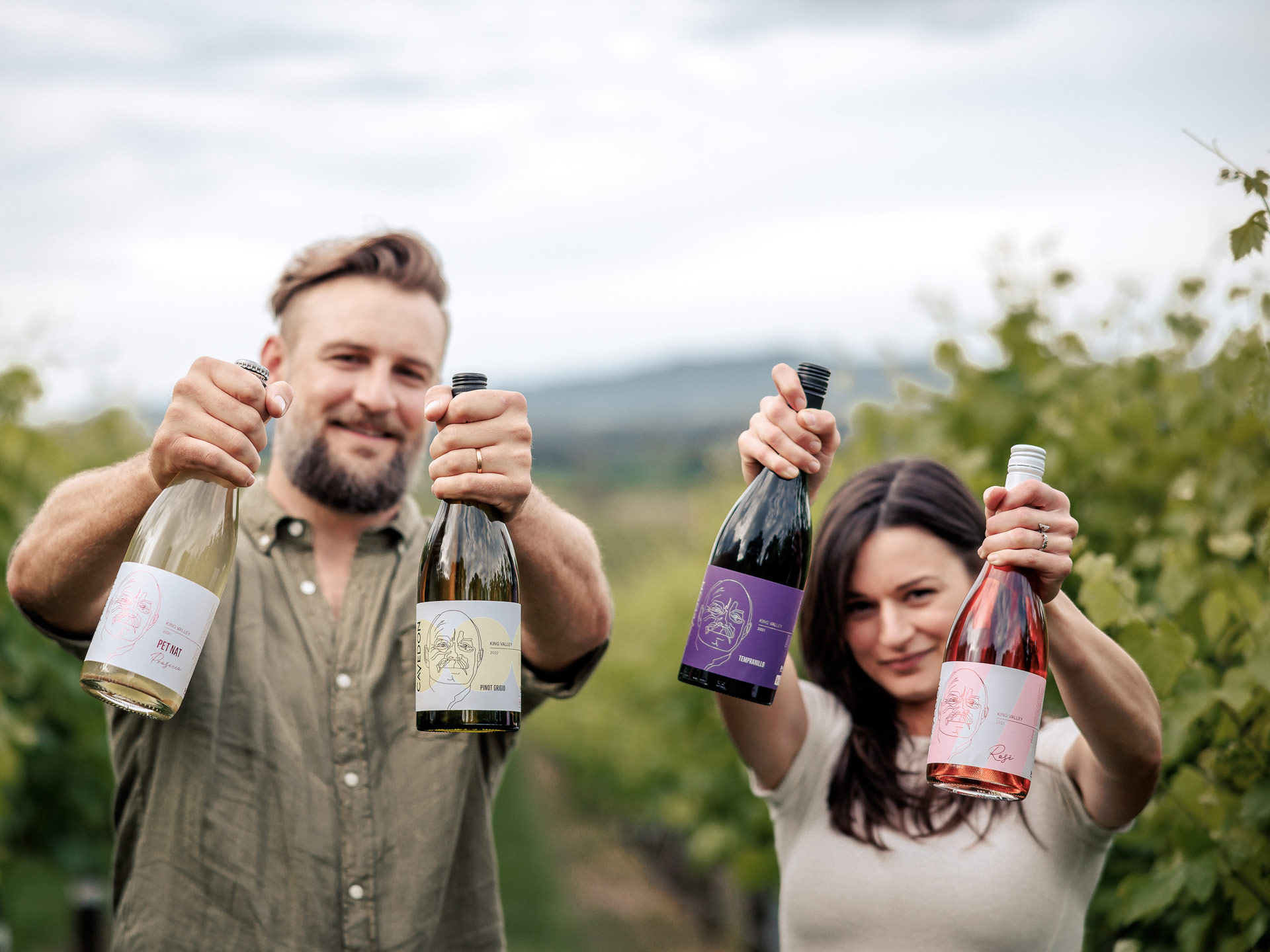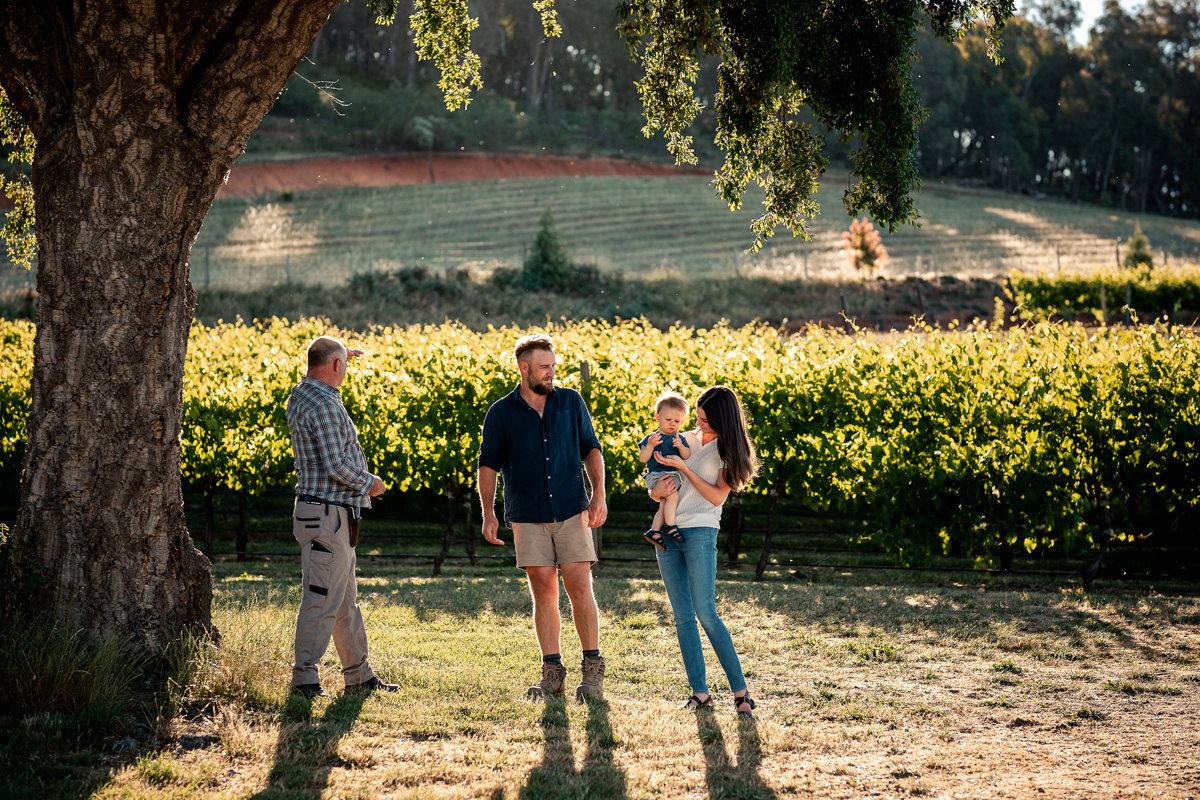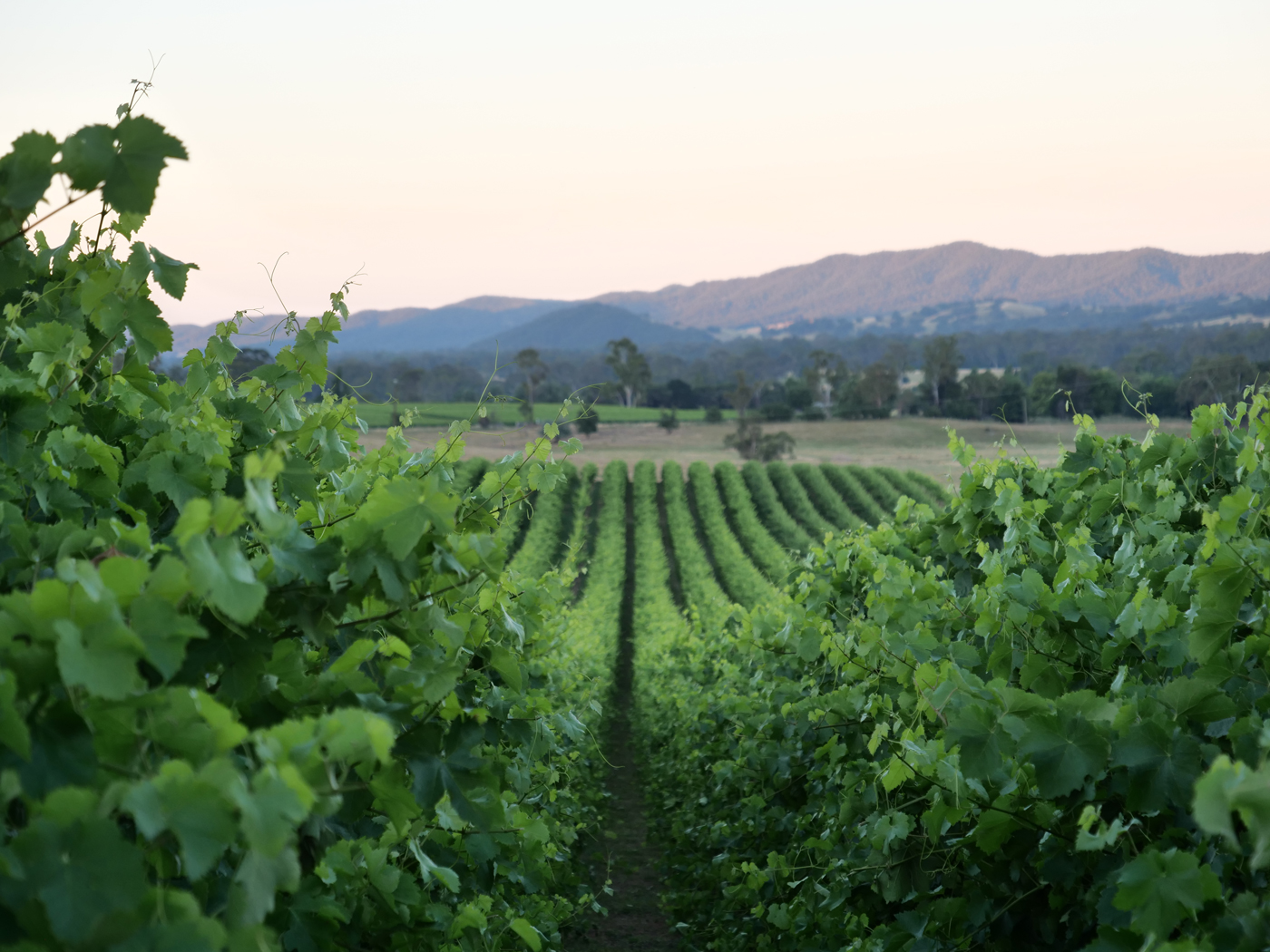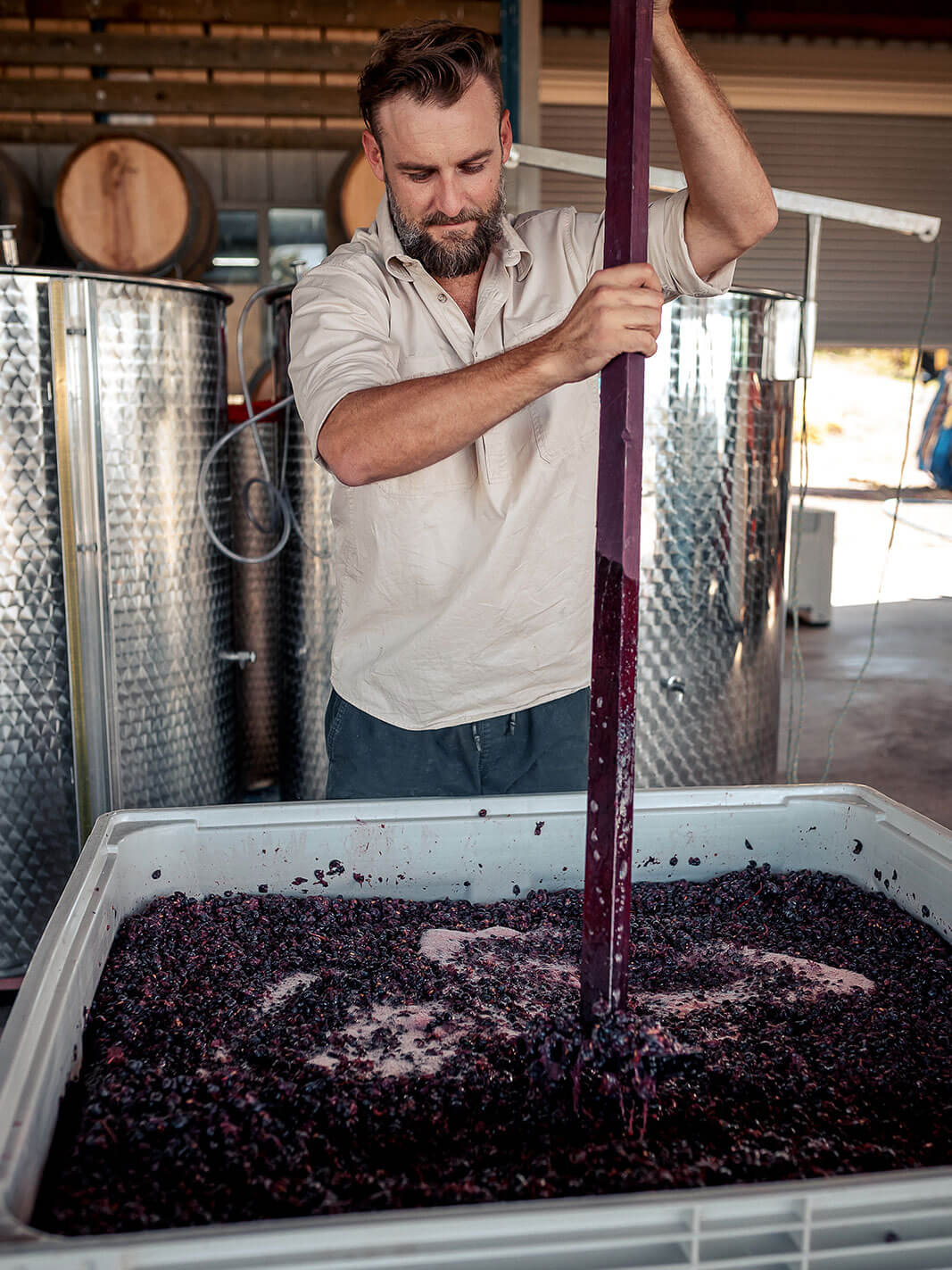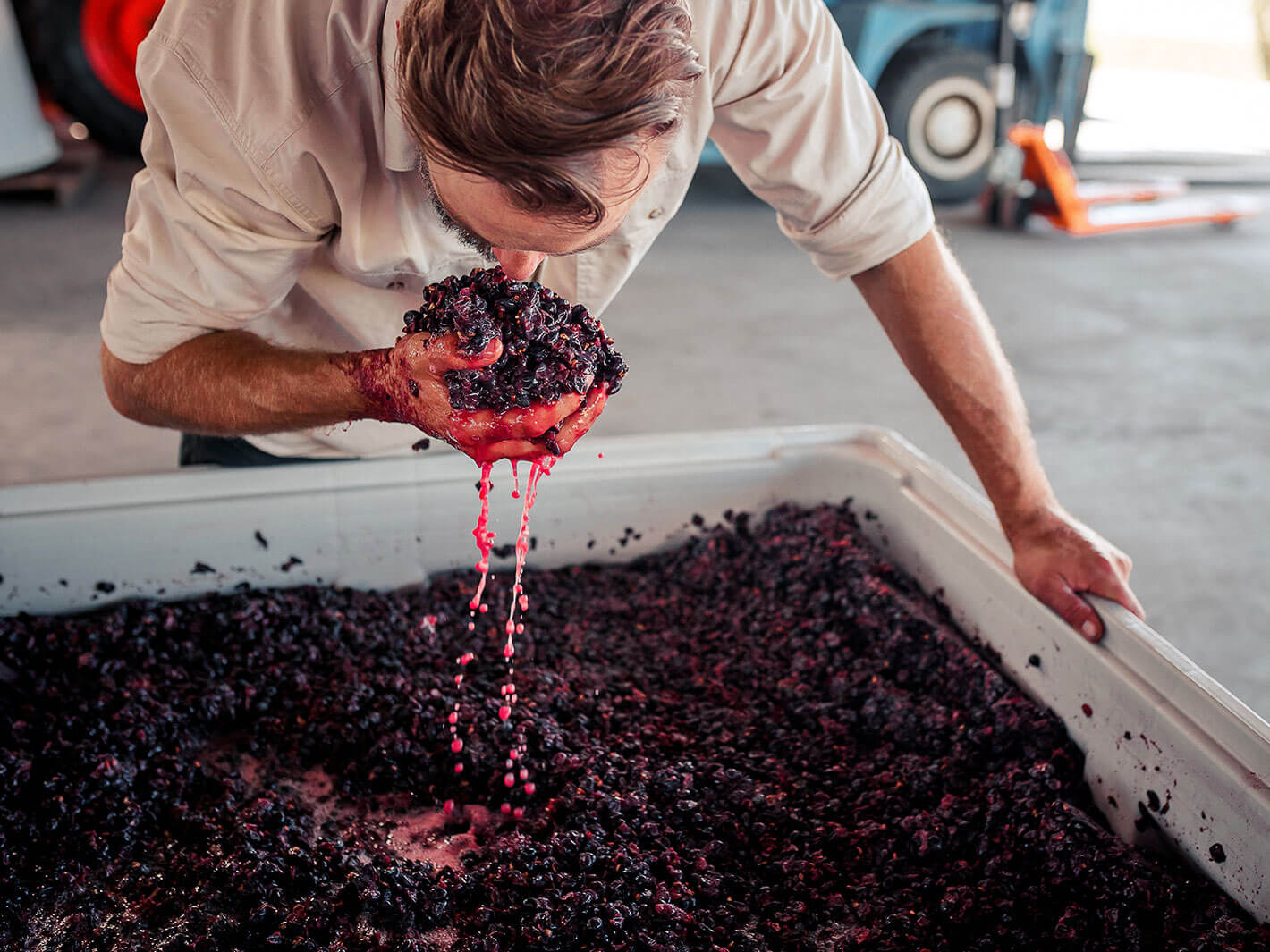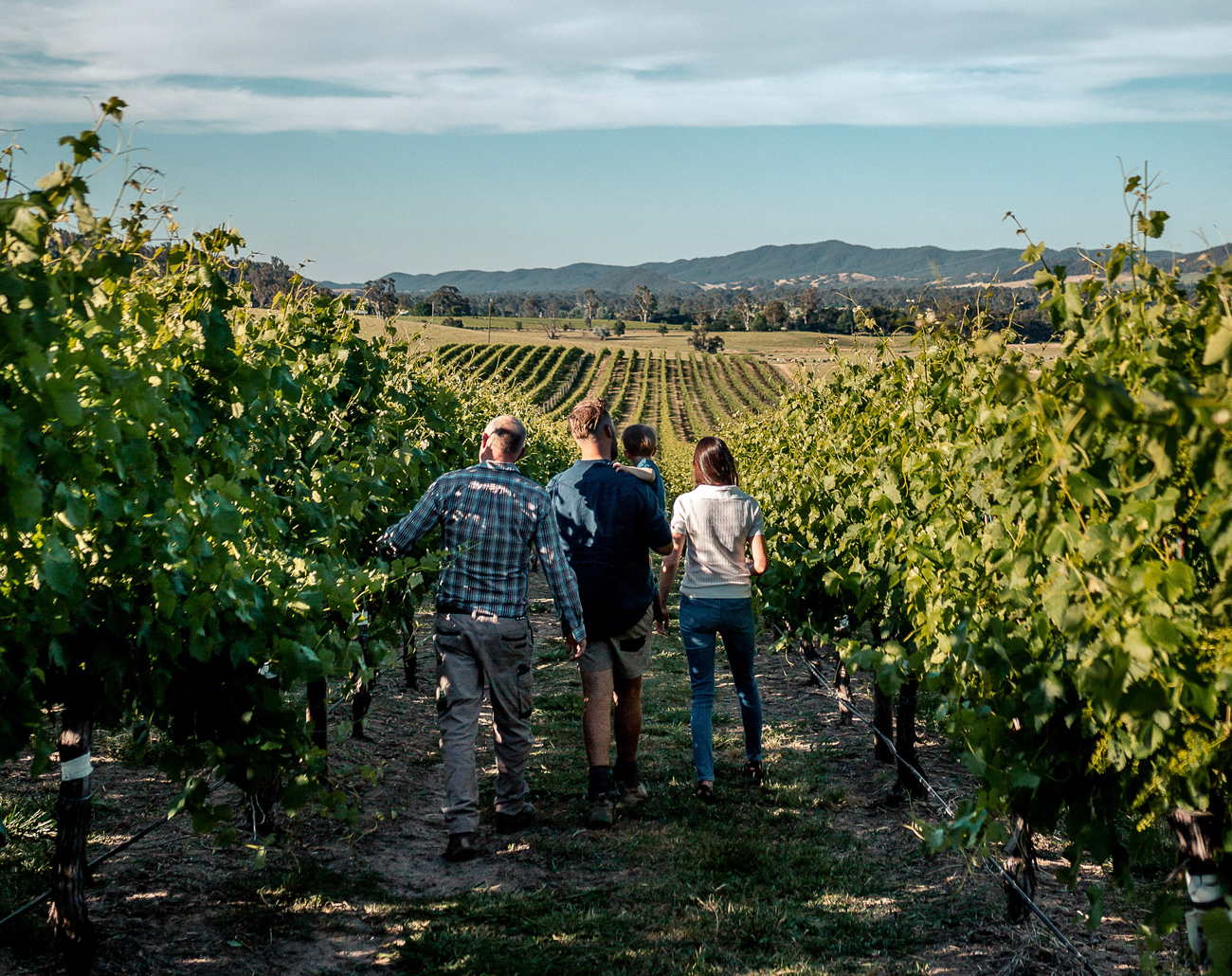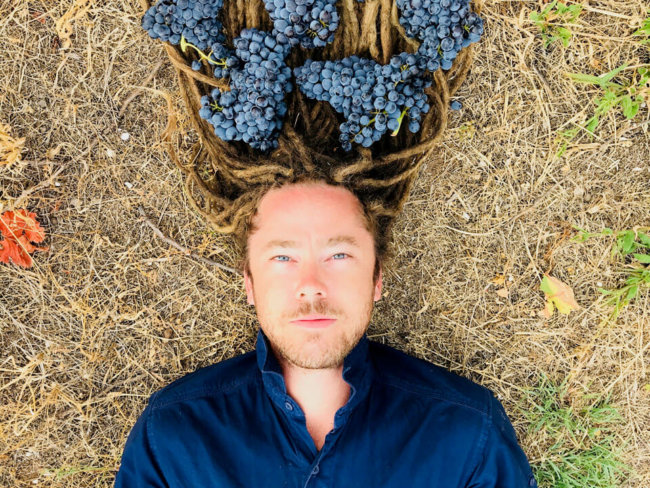Cavedon Wines is the third-generation manifestation of a pioneering King Valley vineyard, with Gabe O’Brien making micro-batches of wine to celebrate the hard work of his father-in-law over 40 plus years, who helped pioneer and then revolutionise grape-growing in the region. O’Brien is starting to do the same for winemaking, introducing styles less common in the district, including skin contact on white grapes, sparkling gewürztraminer, nouveau reds and bottle fermenting prosecco to make both col fondo and zero dosage wines.
The Cavedon Vineyard, in Victoria’s King Valley, was set up as a contract business, a source of grapes for other makers that was first planted by Dino Cavedon in 1977. And it still largely operates as such, but with the involvement of his daughter Pia and her husband Gabe O’Brien, that vineyard has also become the source of their own family label, which was launched in 2020.
“It began after Dino started making plans to slow down,” says O’Brien. “The business thrived and developed a reputation for quality among local winemakers. But he had no succession plan. He had no-one to take over the vineyard. Pia and I were living in Torquay at the time, and when Dino said he was soon wanting to hang up the boots, we moved back. We couldn’t watch these abundant vines – 44 years of hard work – turn to nothing.”
The pair had taken on the responsibility of managing the site in 2017, with the first wines made from the following harvest. “We began making wine in vintage ’18, with the help of a couple of winemaking texts and guidance from a couple of local winemakers,” says O’Brien, noting that he has no formal winemaking education.
“When Pia and I returned to the farm and began working with Dino, we were a little unfulfilled. We spent each day meticulously caring for these grapes and at the end of the year, every grape left the vineyard. Which is great, of course. As a grower, you want that. But we just wanted more to show for the year’s work – for 40-odd years of work, rather. We wanted to have a wine that told the story of our vineyard. I guess we also got excited about introducing new styles and approaches into the King Valley.”
The site was first planted by Cavedon with his brother and their father, who O’Brien notes were some of the viticultural pioneers of the region. “The Department of Agriculture partnered with Dino so they could amass data and help facilitate the innovation of quality grape-growing in the region. Over this time, Dino helped innovate some of the local viticultural methods used today. Particularly in trellising. And he has been meticulous in every decision on the vineyard since.”
That thoughtful work amongst the vines continues today, which has seen a revised water management plan implemented, as well as increased nutrient inputs and a pest management plan that limits the need for chemical inputs. O’Brien also notes that they are in the process of grafting and replanting, in the quest for the ideal mix of varieties.
“Almost every noble grape has been grown on the vineyard, initially, the family grew common varieties of the 70s, like riesling and chardonnay, then shiraz and merlot. Dino then started a new plot where he began planting Italian varieties, like pinot grigio, barbera, and sangiovese. He was one of the first growers to plant Italian varieties in the region. We planted and grafted three new varieties in 2021: mencía, grenache and grüner veltliner. They’re definitely not the first varieties that come to mind for the king valley, but we know they’ll thrive on our site and suit the style of wines we want to make.”
The early focus was on prosecco, gewürztraminer and albariño, with the latter grafted over in 2018, but a pinot noir and a pinot grigio also feature. Prosecco has perhaps become the lead variety in these early stages, with two bottlings in their tiny total production. Both are bottle fermented, with one disgorged but left super dry with zero dosage, while the other is also dry but not disgorged, in the ancient Italian style of col fondo, where the lees sediment is left in the bottle, adding texture to the finished wine.
More recently, red wines made in bright and forward style have joined the stable. “We’ve developed a bit of an affinity for cab-mac,” says O’Brien. “We’re really loving our nouveau style in the sangiovese, and we’ll be looking at making a similar style with our tempranillo. And you never know, there’ve been a few wines that’ve come about super last minute. If a variety is looking too good to pass up and staring at me every day in the vineyard, we’ll just go for it. A bit like our sparkling gewürztraminer that we’re releasing soon.”
That wine comes from the 2021 harvest and is due for release in ’23, says O’Brien, who notes that it is one of their most experimental wines to date. “It combines one of our favourite varieties with one of our favourite winemaking techniques: cab mac. It’s gewürz on steroids, and we love how it’s turned out.”
O’Brien notes that they still see themselves as grape-growers firstly, and then as winemakers. “As a family, we dedicate ourselves to growing the best possible fruit we can each season, of which the majority is sold off under contract. Our concept is to take a small percentage of only our very best fruit of the season and make a limited selection of boutique wine from it.”
All the Cavedon wines are made in tiny batches onsite by O’Brien, with some equipment – and a bit of advice – borrowed from neighbouring wineries. “The label has been a creative outlet for us. We’ve had a lot of fun taking on new styles and exploring what we can do with our fruit, and that’s the direction we want to continue to take. Our winemaking is still in its youth, so there’s still plenty of room to expand with different methods and varieties over the next few years.
“In this sense, as younger winemakers and growers in the region, we’re trying to step outside what everyone else is doing here. We take very small parcels of our best fruit, and we use minimal intervention, so we can champion the quality and nuances of these grapes and the microclimate here. Like Dino did 44 years ago, we’re doing our best to experiment and introduce new approaches in the region, doing our bit to keep our little wine community fresh and vibrant. That’s our hope, anyway.”

